An 18–40 GHz Ridge Waveguide Magic-T Using Stepped Conducting T-Junction Transition
Abstract
1. Introduction
2. Ridge Waveguide Magic-T Design
2.1. E-Plane Power Divider
2.2. H-Plane Power Divider
3. Measurement and Analysis
4. Conclusions
Author Contributions
Funding
Institutional Review Board Statement
Informed Consent Statement
Data Availability Statement
Conflicts of Interest
References
- Chu, Q.; Wu, Q.; Mo, D. A Ka-Band E-Plane Waveguide Magic-T With Coplanar Arms. IEEE Trans. Microw. Theory Tech. 2014, 62, 2673–2679. [Google Scholar] [CrossRef]
- Beyer, R.; Rosenberg, U. CAD of magic tee with interior stepped post for high performance designs. IEEE MTT-S Int. Microw. Symp. Dig. 2003, 2, 1207–1210. [Google Scholar]
- Leal-Sevillano, C.A.; Ruiz-Cruz, J.A.; Montejo-Garai, J.R.; Relollar, J.M. Compact broadband couplers based on the waveguide Magic-T junction. In Proceedings of the 43rd European Microwave Conference, Nuremberg, Germany, 6–10 October 2013; pp. 151–154. [Google Scholar]
- Hwang, K.C. Design and Optimization of a Broadband Waveguide Magic-T Using a Stepped Conducting Cone. IEEE Microw. Wireless Compon. Lett. 2009, 19, 539–541. [Google Scholar] [CrossRef]
- He, Y.; Mo, D.; Wu, Q.; Chu, Q. A Ka-Band Waveguide Magic-T With Coplanar Arms Using Ridge Waveguide Transition. IEEE Microw. Wireless Compon. Lett. 2017, 27, 965–967. [Google Scholar] [CrossRef]
- U-Yen, K.; Wollack, E.J.; Papapolymerou, J.; Laskar, J. A broadband planar Magic-T using microstrip-slotline transitions. IEEE Trans. Microw. Theory Tech. 2008, 56, 172–177. [Google Scholar] [CrossRef]
- Peng, W.; Xiao, Q.; Chen, X. K-Band Planar Magic-T Using LTCC Technology. IEEE Microw. Wireless Compon. Lett. 2017, 27, 715–718. [Google Scholar] [CrossRef]
- Shafique, M.F.; Robertson, I.D. Fabrication of Microstructures in LTCC Technology Using Selective Laser Ablation. IEEE Trans. Compon. Packag. Manuf. Technol. 2015, 5, 845–851. [Google Scholar] [CrossRef]
- Peng, S.; Pu, Y.; Wu, Z.; Luo, Y. Compact Ka-band magic-T using waveguide to microstrip dual-probe transition. IEEE Microw. Wireless Compon. Lett. 2022, 32, 946–949. [Google Scholar] [CrossRef]
- Farahbakhsh, A. Ka-Band Coplanar Magic-T Based on Gap Waveguide Technology. IEEE Microw. Wireless Compon. Lett. 2020, 30, 853–856. [Google Scholar] [CrossRef]
- Zhang, Y.; Zhang, F.; Gao, Y.; Xu, J.; Guo, C.; Shang, X. 3D printed waveguide step-twist with bandpass filtering functionality. IEEE Electron. Lett. 2020, 50, 527–529. [Google Scholar] [CrossRef]
- Le Sage, G.P. 3D Printed Waveguide Slot Array Antennas. IEEE Access 2016, 4, 1258–1265. [Google Scholar] [CrossRef]
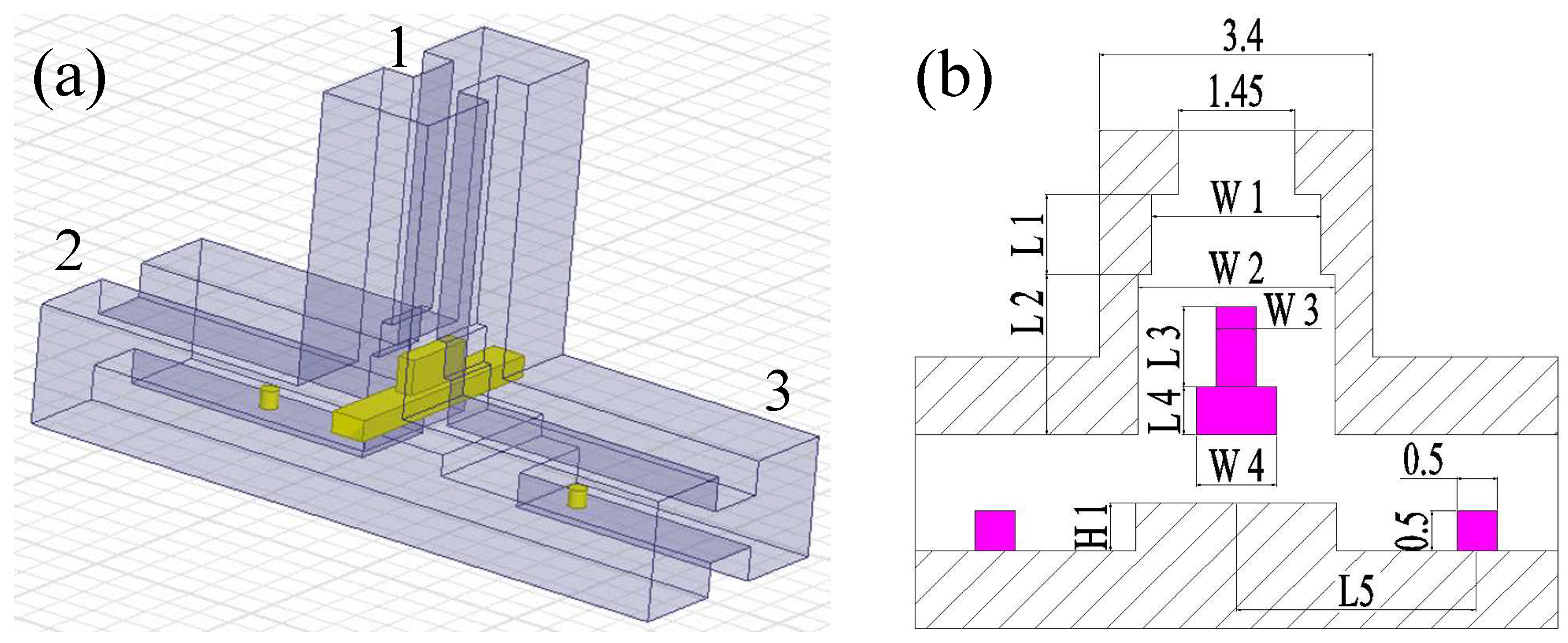


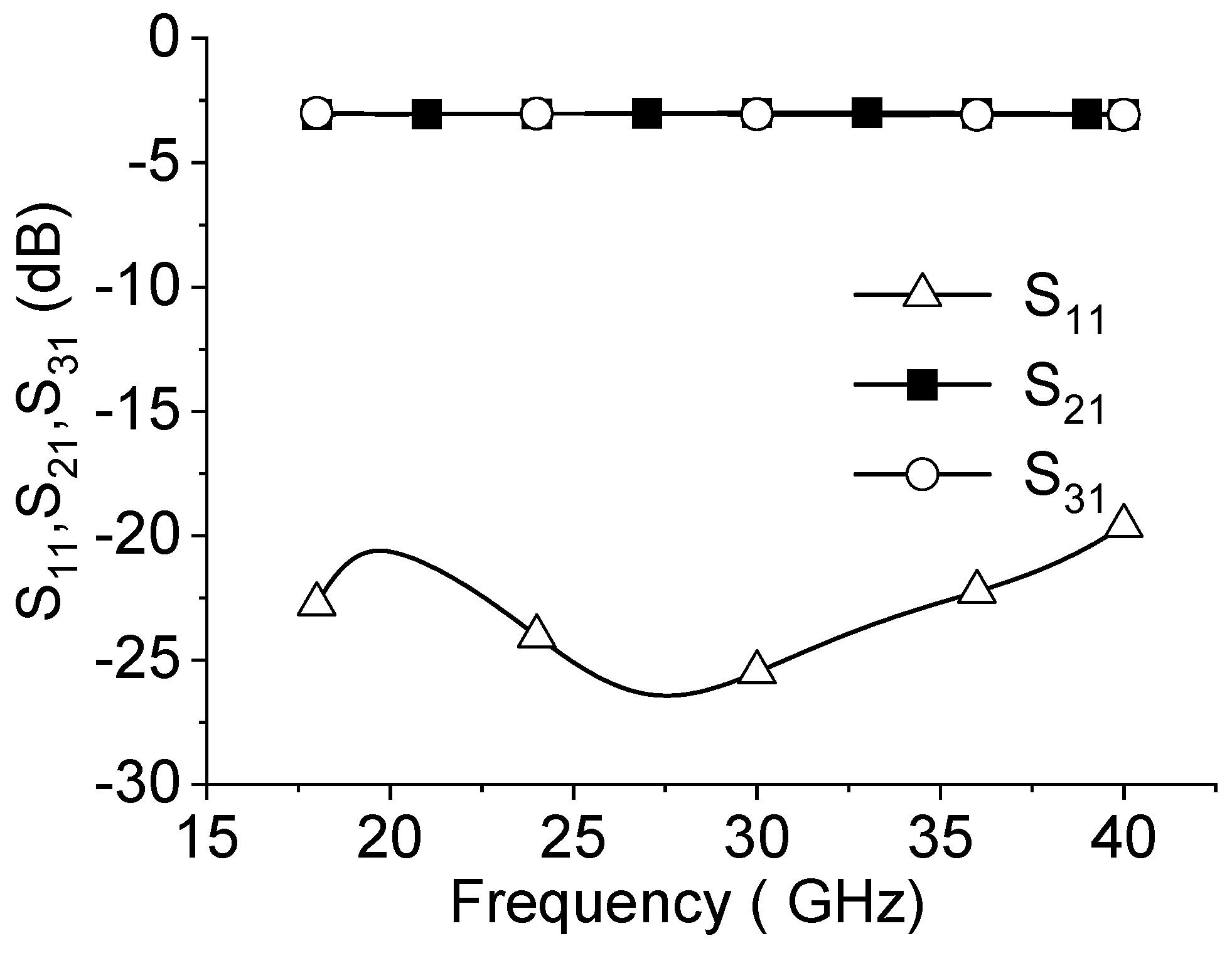

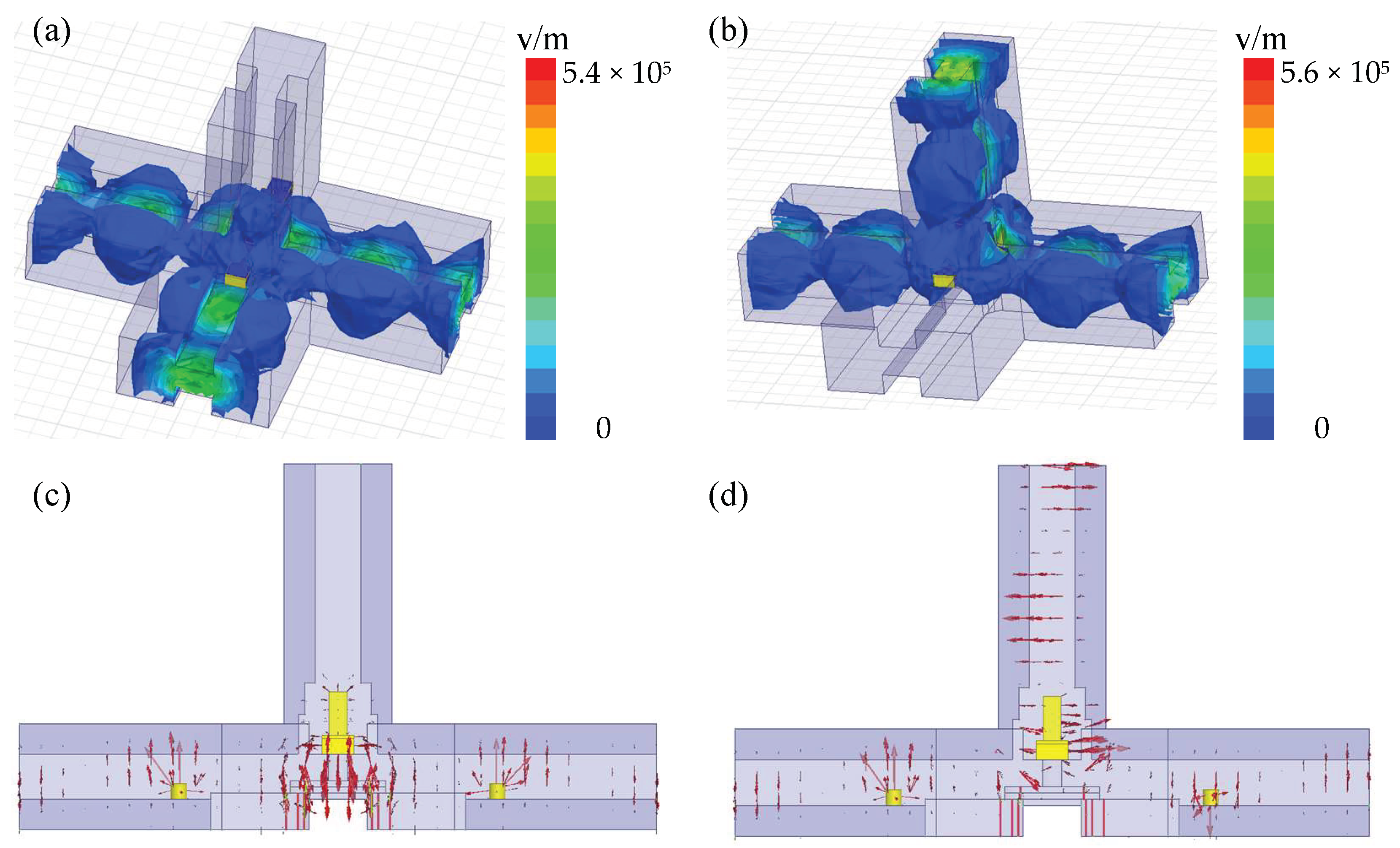
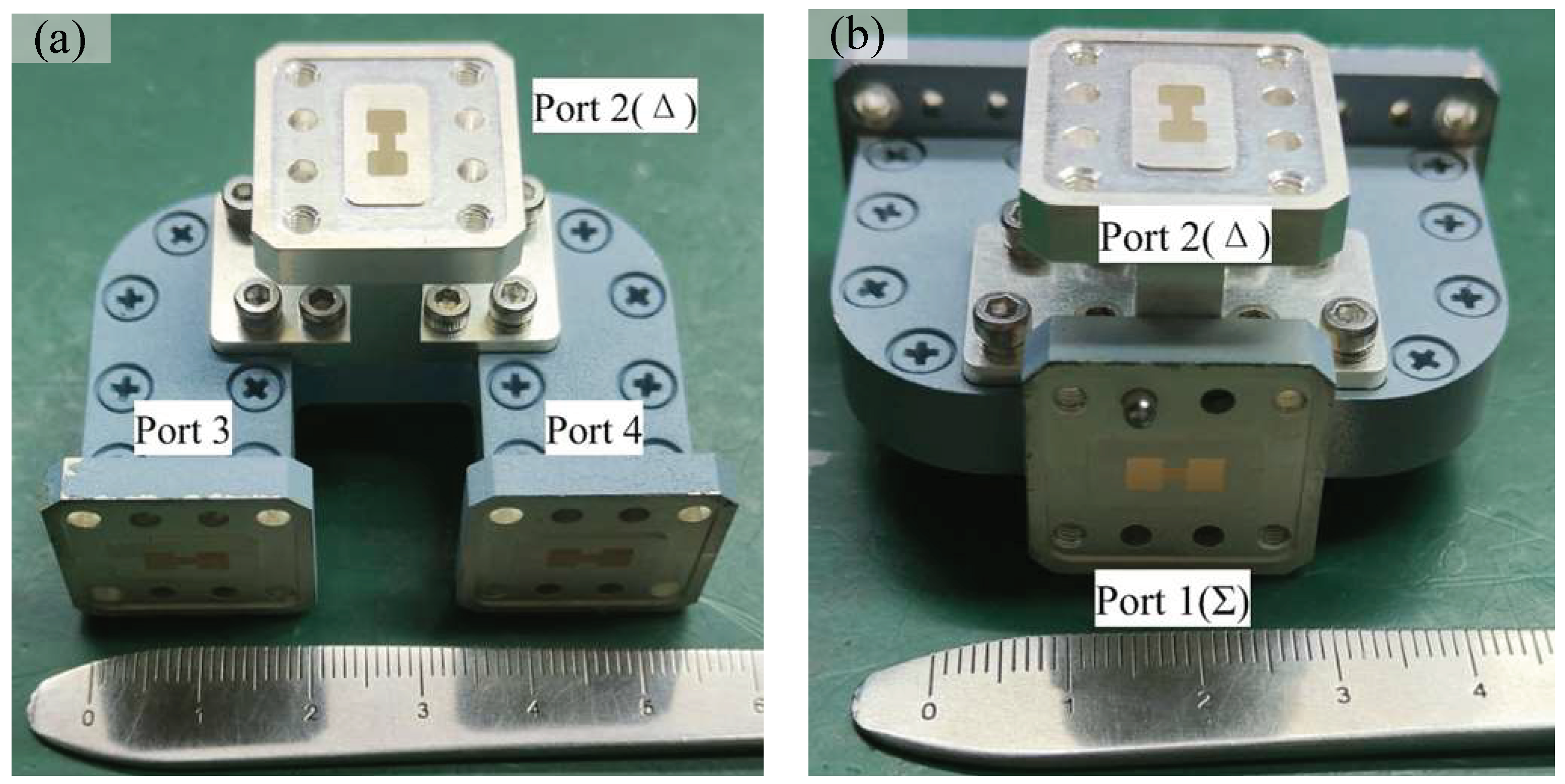

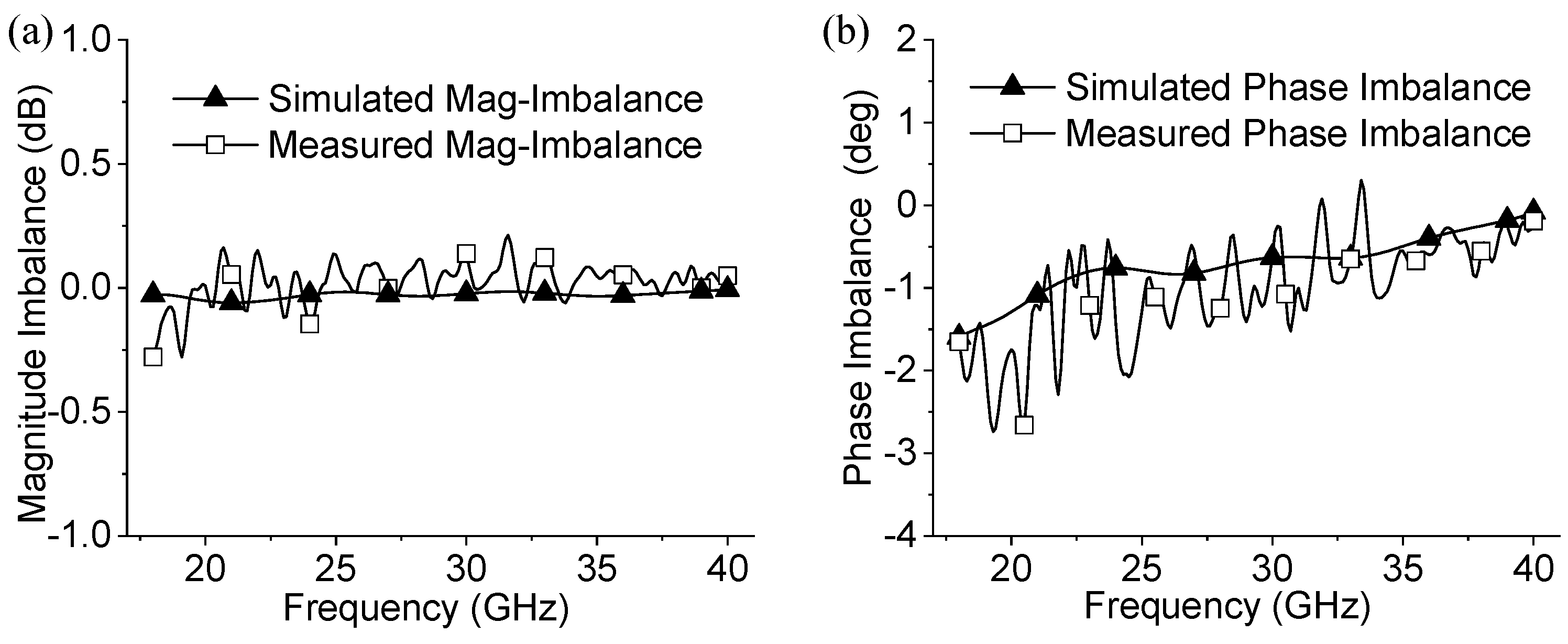
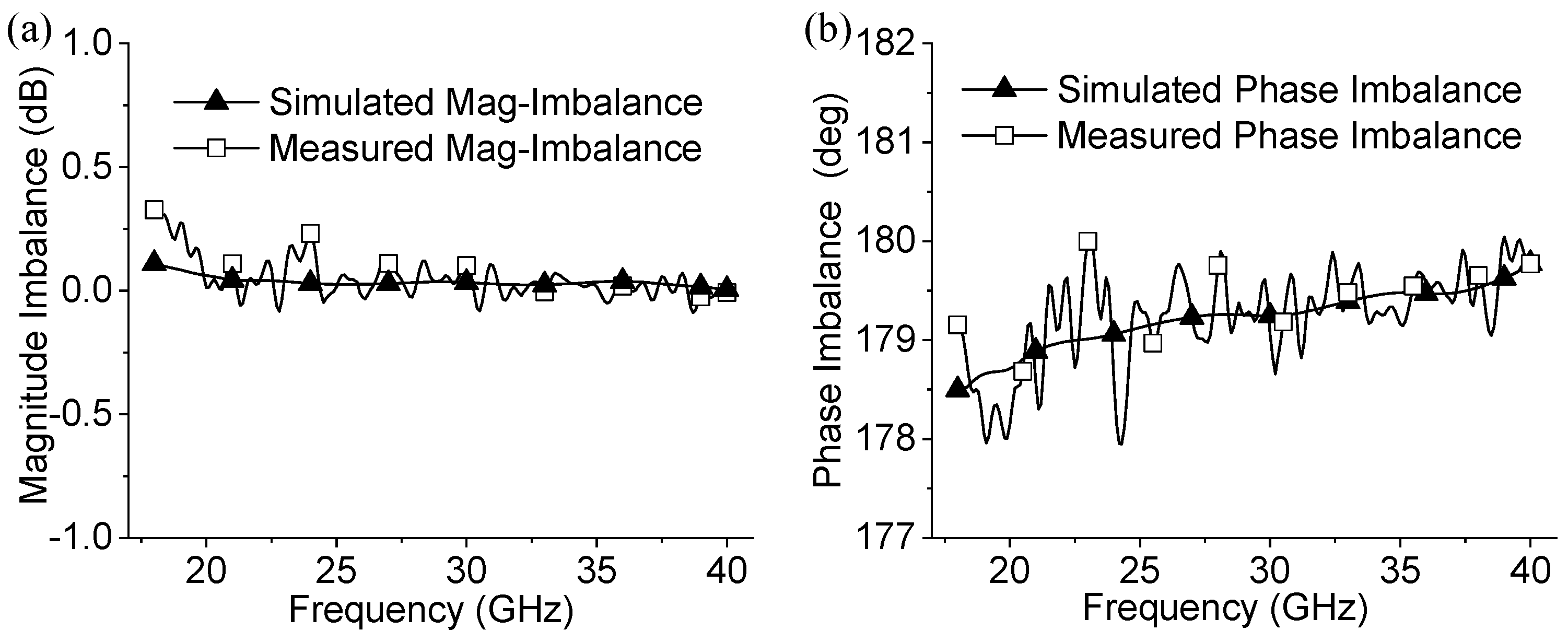
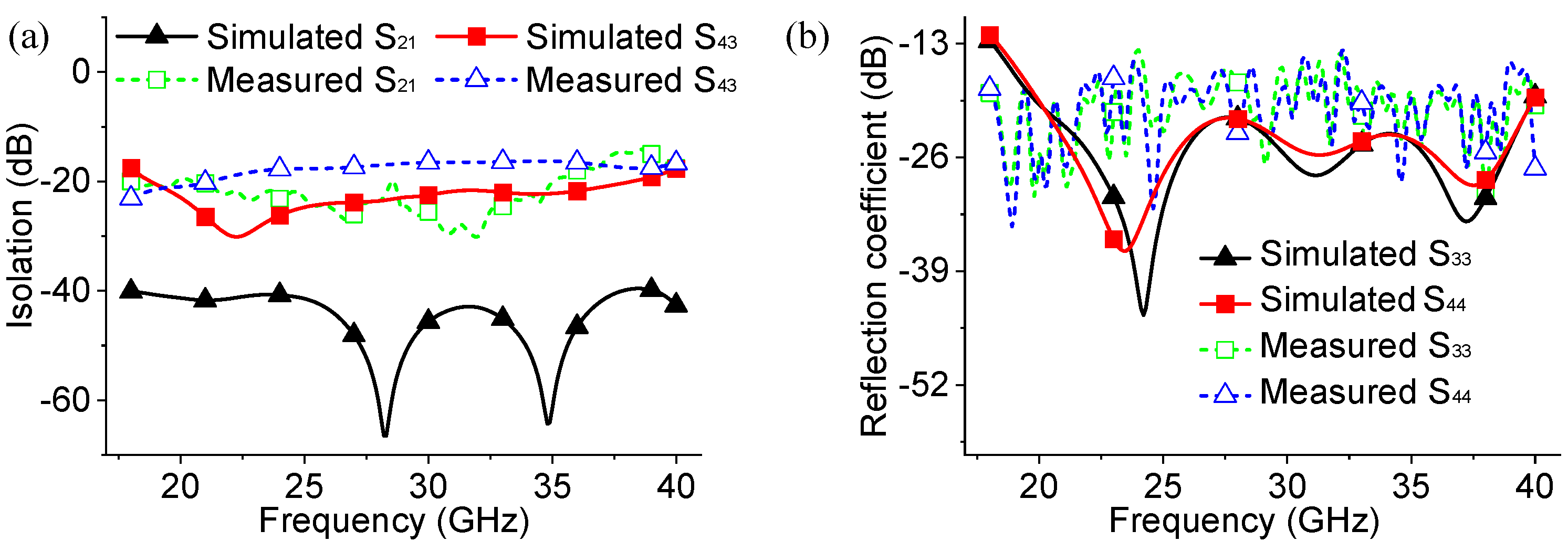
| Parameter | W1 | W2 | W3 | W4 | H1 | W5 |
|---|---|---|---|---|---|---|
| Value | 2.1 | 2.5 | 0.57 | 1 | 0.6 | 0.6 |
| Parameter | L1 | L2 | L3 | L4 | L5 | L6 |
| Value | 1 | 1.28 | 1.4 | 0.6 | 5 | 2.35 |
Disclaimer/Publisher’s Note: The statements, opinions and data contained in all publications are solely those of the individual author(s) and contributor(s) and not of MDPI and/or the editor(s). MDPI and/or the editor(s) disclaim responsibility for any injury to people or property resulting from any ideas, methods, instructions or products referred to in the content. |
© 2024 by the authors. Licensee MDPI, Basel, Switzerland. This article is an open access article distributed under the terms and conditions of the Creative Commons Attribution (CC BY) license (https://creativecommons.org/licenses/by/4.0/).
Share and Cite
Peng, W.; Li, C.; Wang, H.; Ye, L. An 18–40 GHz Ridge Waveguide Magic-T Using Stepped Conducting T-Junction Transition. Electronics 2024, 13, 2407. https://doi.org/10.3390/electronics13122407
Peng W, Li C, Wang H, Ye L. An 18–40 GHz Ridge Waveguide Magic-T Using Stepped Conducting T-Junction Transition. Electronics. 2024; 13(12):2407. https://doi.org/10.3390/electronics13122407
Chicago/Turabian StylePeng, Wenchao, Chao Li, Hailong Wang, and Longfang Ye. 2024. "An 18–40 GHz Ridge Waveguide Magic-T Using Stepped Conducting T-Junction Transition" Electronics 13, no. 12: 2407. https://doi.org/10.3390/electronics13122407
APA StylePeng, W., Li, C., Wang, H., & Ye, L. (2024). An 18–40 GHz Ridge Waveguide Magic-T Using Stepped Conducting T-Junction Transition. Electronics, 13(12), 2407. https://doi.org/10.3390/electronics13122407





